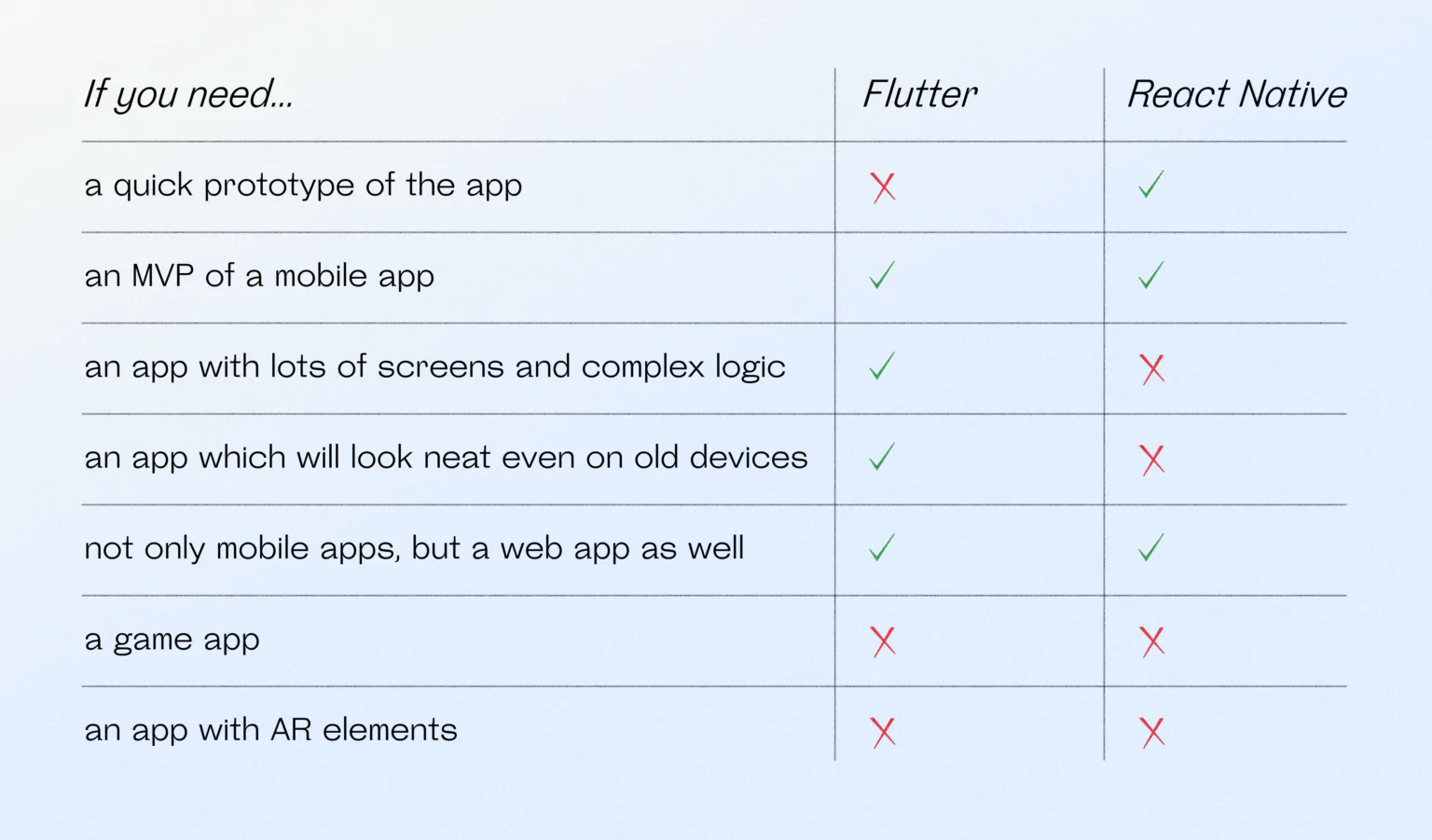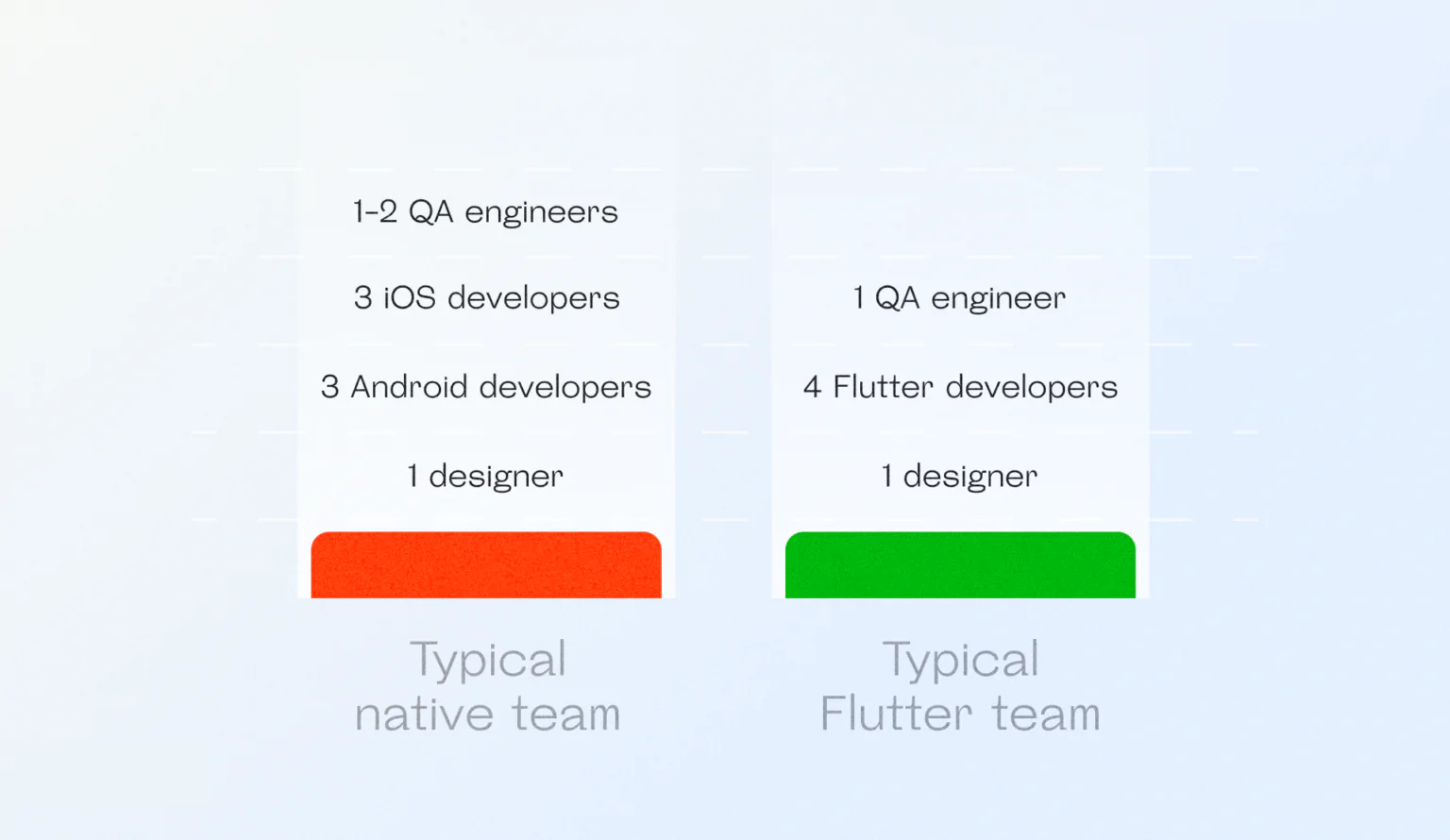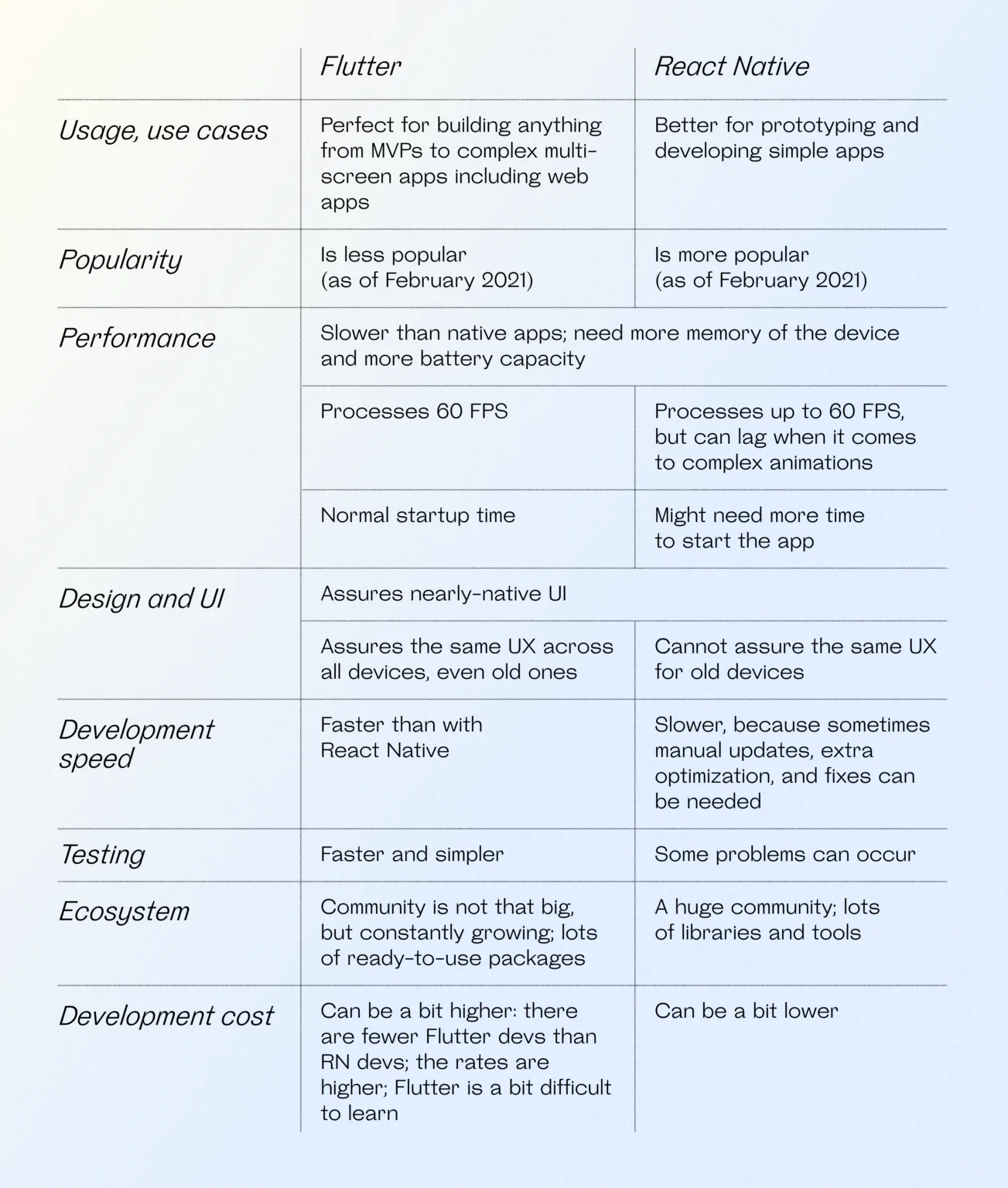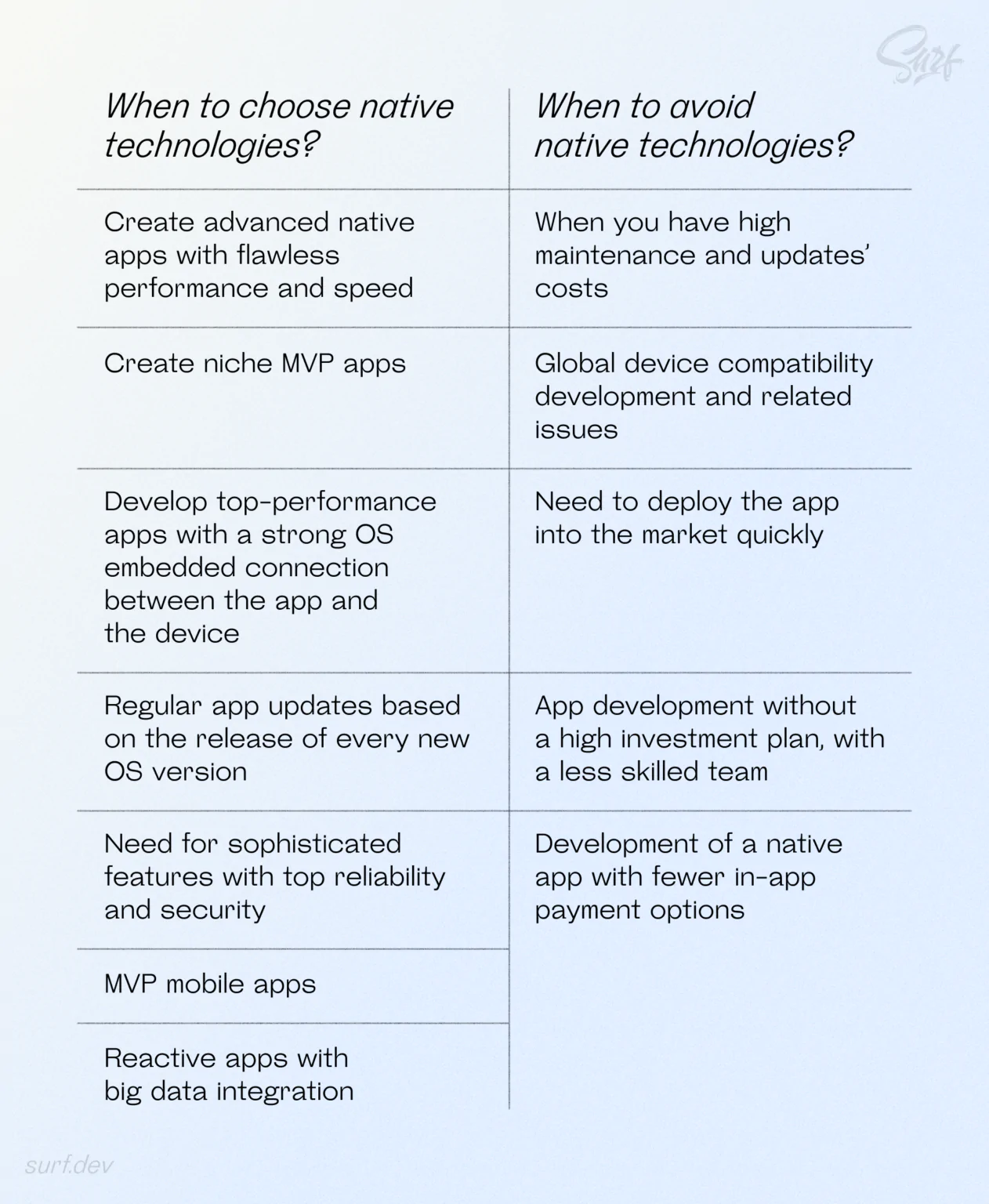Overview
Many organisations are still interested in cross-platform apps because native apps for iOS and Android are more expensive to develop and maintain. Flutter’s cross-platform architecture has been gaining traction in a variety of industries, including retail, financial, and e-commerce, since 2018.
When comparing native vs Flutter programming, both offer excellent scalability and a good user experience. However, code maintenance, development speed, app performance, prices, and other factors vary.
Don’t fret. We are here to help you out with the dilemma.

What is Flutter?
It is a cross-platform framework that enables you to create a single programme that works on iOS and Android. At the same time, most cross-platform frameworks have a key flaw: unpredictable behaviour of interface elements and slow animations.
Flutter is a popular cross-platform framework that uses the Dart programming language and has a single code base, which was recently released in 2018, and has proven to be a useful toolkit for developing animations and high-quality UI components. It features excellent animations and user-friendly interface elements, despite being Google’s fresh approach to cross-platform.
What are Native Technologies?
Native application development, unlike cross-platform technologies, is application-specific to either Android or iOS. Native apps are written in languages supported by the device’s operating system vendor:
- Kotlin, Java, and Android Studio are all available for Android.
- Swift, Objective-C, and Xcode are all used on iOS.
Native apps, on the whole, have few limitations, and their users may take full advantage of advanced capabilities like an accelerometer, camera, GPS, and so on. Users can get native apps via Google Play and the App Store, among other places.
Native app development and support necessitate large expenses. The reason is that developers must adapt business logic, interface, and layout to the platform’s features. As a result, compared to native technology, low-budget Flutter is becoming more popular among hi-tech firms.
Flutter vs native app:
Speed of development
Flutter allows developers to write a single piece of code for two different platforms, dramatically reducing development time and cost. In comparison to native codes, flutter codes are simpler to write. There is no need to recruit seasoned pros because even amateur developers rapidly grasp the principles of Flutter. When it comes to native technology, developers must write two sets of code for Android and iOS, which takes longer time.
Compared to the construction of two native apps, Flutter development is 20-50 per cent faster. However, the speed is affected by the interface’s complexity and the required functionalities.
App performance
Compared to the flutter app, the native app uses around half of the CPU used by flutter. React Native applications, on the other hand, consume significantly more CPU.
When it comes to memory utilisation, native apps are the most efficient.
Code Maintenance
Supporting a native application takes more work in most circumstances.
- To begin with, maintaining two codebases necessitates considerable effort.
- Second, developers must build unique updates for each platform while also identifying issues.
- Third, as the number of OS-supported devices increases, so does the maintenance effort.
It is significantly easier to manage a Flutter app because there is only one codebase for two applications. The short code makes it easier for developers to identify problems, support third-party libraries, and locate external tools. Furthermore, Flutter’s Hot Reloading feature assists in quickly resolving application bugs.
App developers availability
Flutter developers are in short supply, and most of them are still learning the language. The main reason for this is the scarcity of Flutter initiatives worldwide. As a result, putting up a competent team of more than 5 Flutter developers may take some time.
A prospective Flutter team’s professional background may also trigger some concerns. To begin a full-fledged Flutter project, you must first learn Dart and write a few samples. A qualified developer must be familiar with both the constraints of mobile development in general and the features of both the Android and iOS platforms.
App development cost
Because two codes have to be written for two different platforms with separate functionalities, native development is significantly more expensive. Furthermore, as seen in the diagram below, native development necessitates the engagement of more developers and other experts.

Flutter could help you save 45.6 per cent on development, 70.5 per cent on QA (if autotests are used), and 33.3 per cent on app design. Projects, on the other hand, are unique. Flutter can save up to 15% of the money in some cases but up to 50% in others. As a result, Flutter has advantages even at the early stages of development: the standard team is smaller, and the time-to-market is decreased.
Flutter and native technologies use cases
The decision between Flutter and native technology is mostly based on the company’s objectives. Flutter is being used by various medium to large organisations, including Alibaba, Airbnb, and Uber apps. Developers use native technology to create sophisticated specialised apps with advanced features. The use cases for Flutter and native technologies are shown below.

When should native technology be used?
In some circumstances, the decision to use more expensive native technologies is unquestionable. As seen in the table below, creating advanced top-performance apps with more sophisticated features is typically the most popular example of using native apps. At the same time, if investors want to save money on development and maintenance, they should avoid native technology.

When should you use Flutter?
We recommend Flutter to many businesses, including retail, banks and fintech, franchisees, and huge corporations. Below are some more examples of Flutter applications.

Flutter’s use in the banking industry could be extremely interesting. Flutter may even be safer than native apps because its source codes are compiled into native code, making human reading impossible.
Furthermore, Flutter applications can use the banking platform’s security features, like Touch ID, Face ID, or a fingerprint scanner. Nubank, the world’s largest digital bank (with over 20 million customers outside of Asia), has already shared a successful case of Flutter integration into a mobile application.
On the other hand, Flutter does not suit brand-specific apps with native functionality, as shown above.
Conclusion
We’ve come to the following findings on Flutter vs native :
- Flutter and native technologies will not be a magic wand for your specific projects and business requirements; each instance is unique.
- In terms of development speed and cost savings, Flutter is a very promising cross-platform framework.
- In 2-3 months, you can construct MVP applications with Flutter. The cost of developing a full-featured Flutter app is, on average, 30% less than developing two native apps.
- Native technologies are better suited to complex niche apps with advanced features like GPS or rich animation.
As the economy continues to deteriorate, we anticipate that more businesses will see Flutter as a great way to get online quickly and expand their reach across electronic platforms.
Give Flutter a try now, and contact Fluttertop if you’re searching for a way to quickly design an app for iOS and Android without sacrificing quality or money.



